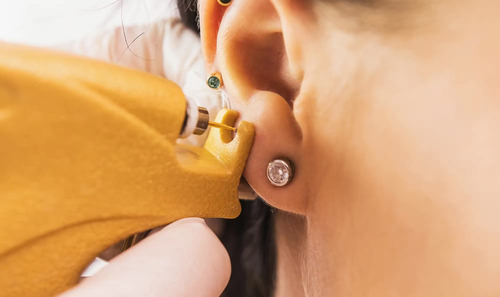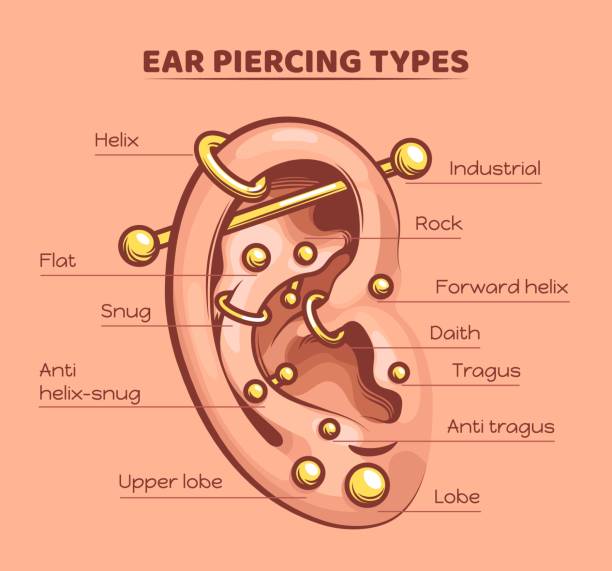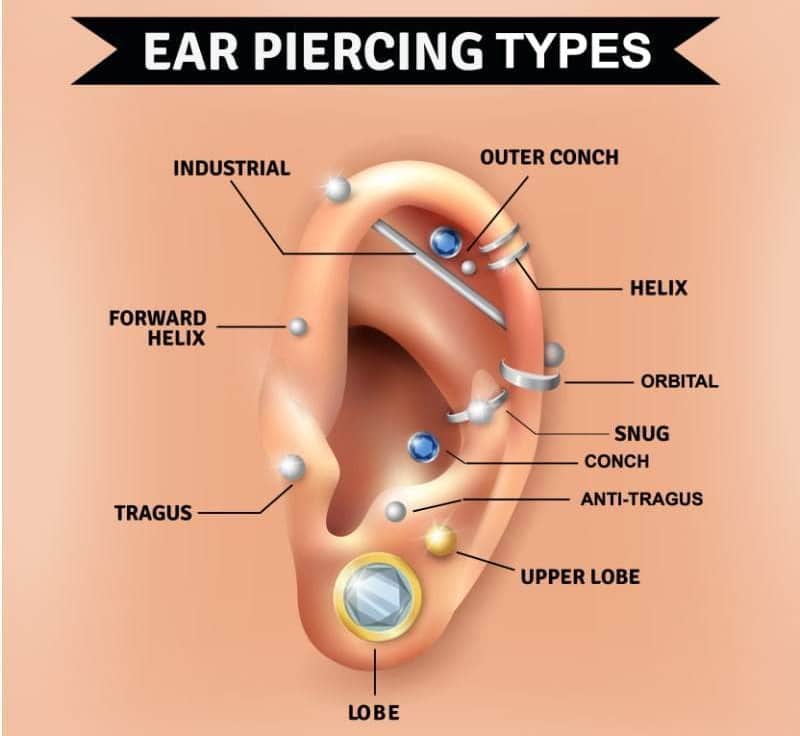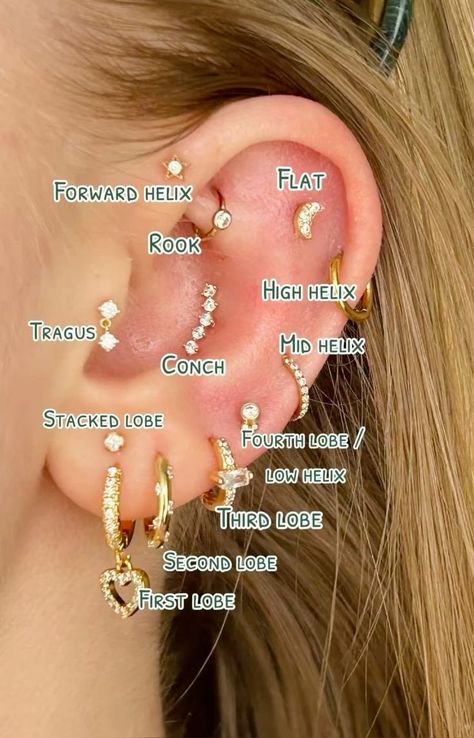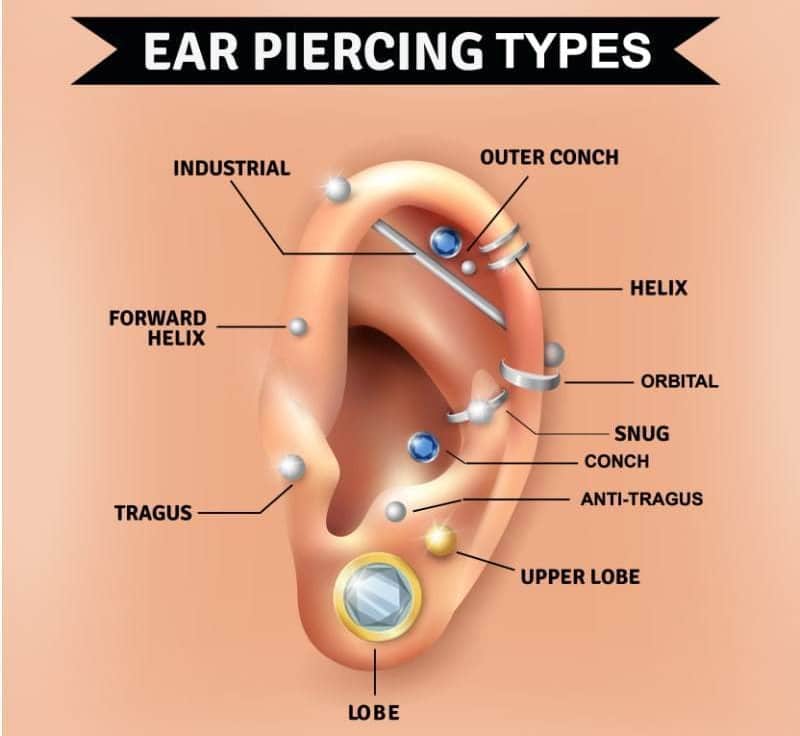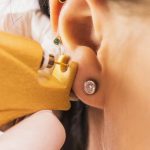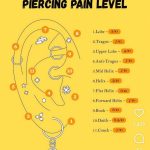Common Conch Piercing Problems and How to Fix Them
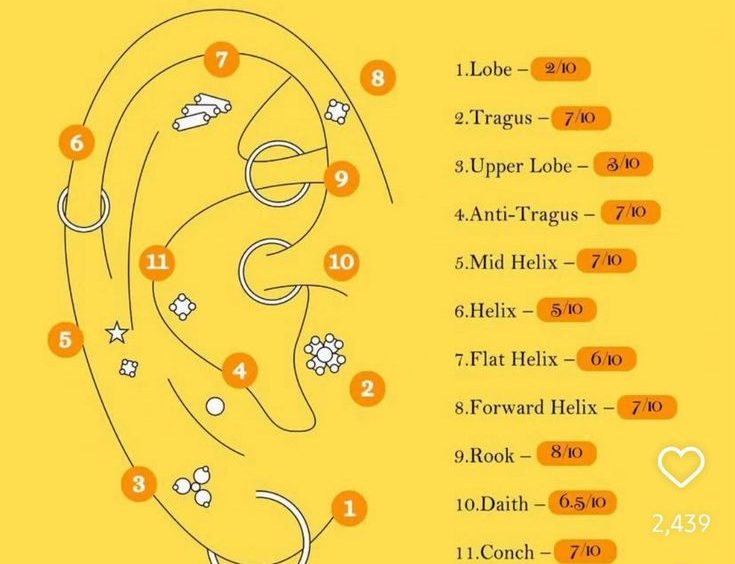
Getting a conch piercing can be an exciting way to express your personal style but just like any body modification, it comes with its own set of challenges. Whether you’ve chosen an inner conch or outer conch piercing, understanding the common problems and knowing how to fix them safely is the key to a smooth healing process.
This guide will help you identify, prevent, and treat the most frequent conch piercing issues using simple and science-backed solutions.
1. Swelling and Redness After Conch Piercing
🔍 What’s Normal:
A little redness, swelling, and tenderness for the first few days after getting your conch pierced is completely normal. It’s your body’s natural reaction to the new wound.
⚠️ What’s Not Normal:
If swelling increases after 3–4 days, or you notice warmth and throbbing pain, it might indicate infection or an allergic reaction.
✅ How to Fix:
- Clean twice daily using saline solution (¼ teaspoon of sea salt in one cup of warm distilled water).
- Avoid touching the piercing with dirty hands.
- Don’t twist or rotate the jewelry.
- If swelling persists, use a cold compress for 5–10 minutes.
- Still swollen after a week? Visit a professional piercer or a dermatologist.
Pro Tip: Avoid sleeping on the pierced ear — it causes pressure, slows healing, and worsens swelling.
2. Infection After Conch Piercing
🔍 Symptoms:
- Yellow or green pus
- Redness spreading around the area
- Burning or sharp pain
- Unpleasant odor
⚠️ Why It Happens:
Infections often occur from improper aftercare, touching with unclean hands, or using non-sterile jewelry.
✅ How to Fix:
- Do not remove the jewelry. Removing it can trap the infection inside.
- Clean with sterile saline spray or sea salt solution twice daily.
- Avoid harsh antiseptics like alcohol or hydrogen peroxide they delay healing.
- If you notice fever or severe pain, see a doctor immediately for antibiotics.
Quick Remedy: Apply a warm compress (not hot) to encourage drainage and soothe irritation.
3. After Conch Piercing Bumps or Keloids
🔍 What’s Happening:
Small bumps can appear around the conch piercing. They might be irritation bumps, hypertrophic scars, or, in some cases, keloids.
⚠️ Causes:
- Sleeping on your piercing
- Changing jewelry too early
- Allergic reactions to metal
- Over-cleaning or using strong chemicals
✅ How to Fix:
- Use saline compresses daily (soak a cotton pad in warm saline and hold it on the bump for 5 minutes).
- Avoid unnecessary touching and twisting.
- Make sure your jewelry is titanium or surgical-grade steel, especially if you have sensitive skin.
- Don’t pop or squeeze the bump; it can worsen scarring.
- For persistent keloids, consult a dermatologist for laser or steroid treatment.
Bonus Tip: Tea tree oil (diluted with carrier oil) can reduce irritation bumps — but only if your skin isn’t sensitive.
4. Jewelry Rejection or Migration
🔍 What’s It?
Rejection happens when your body “pushes out” the jewelry because it recognizes it as a foreign object. Migration means the jewelry slowly moves from its original position.
⚠️ Warning Signs:
- Jewelry appears closer to the skin surface
- Thinning of the skin around the piercing
- Constant irritation or itching
✅ How to Fix:
- Switch to implant-grade titanium jewelry, which is hypoallergenic.
- Avoid heavy or oversized jewelry.
- If migration continues, remove the jewelry (by a piercer) to prevent scarring.
- Always get piercings done by an experienced professional who knows proper placement and depth.
Prevention Tip: Your conch cartilage should have enough thickness before piercing. Thin cartilage increases the risk of migration.
5. Prolonged Healing Time After Conch Piercing
⏳ Expected Healing Time:
Conch piercings usually take 6–12 months to heal completely.
⚠️ Delayed Healing Signs:
- Constant discharge or crusting
- Tenderness after several months
- Bumps forming frequently
✅ How to Fix:
- Maintain consistent cleaning with saline solution (no skipping days).
- Keep hair, headphones, and phones away from the piercing area.
- Avoid swimming pools, hot tubs, or any body of water with bacteria.
- Make sure you’re eating healthy; good nutrition supports healing.
- If healing doesn’t improve after 6 months, see a piercer for professional cleaning or jewelry adjustment.
Pro Tip: Some people heal more slowly due to immune or skin type differences. Be patient and consistent.
6. Allergic Reactions to Jewelry
🔍 Common Culprit:
Cheap metals like nickel cause itching, redness, and rash around the piercing.
✅ How to Fix:
- Replace jewelry with titanium, niobium, or surgical stainless steel.
- Avoid gold-plated jewelry the coating wears off easily.
- If irritation continues after switching, consult a dermatologist.
7. Crust or Dry Skin Around the Conch Piercing
🔍 What’s Normal:
A small amount of clear or white crust is part of the natural healing process.
⚠️ When It’s a Problem:
If crusting becomes thick, yellowish, or painful to clean, it could be a sign of mild infection or over-drying.
✅ How to Fix:
- Gently soak the area in warm saline to loosen crusts before cleaning.
- Avoid over-cleaning (more than twice a day).
- Don’t pick the crust off; it can reopen the wound.
- Apply a small amount of unscented moisturizer or vitamin E oil around the area (not directly in the hole).
8. After Conch Piercing Pain When Sleeping or Using Earphones
🔍 Why It Happens:
The conch piercing is placed in the middle cartilage, which easily gets irritated by pressure or friction.
✅ How to Fix:
- Use a donut pillow or travel pillow to sleep without touching your ear.
- Switch to over-the-head headphones instead of in-ear ones.
- Avoid lying on that side until fully healed.
Extra Tip: If you must use earphones, clean them daily and make sure they don’t press directly on your piercing.
9. Embedded Jewelry
🔍 What It Means:
Sometimes the skin grows over part of the jewelry; this is called an embedded piercing.
⚠️ Causes:
- Jewelry is too short or too tight
- Swelling pushes jewelry deeper
- Sleeping on the piercing during early healing
✅ How to Fix:
- Do not try to remove it yourself.
- Visit your piercer or doctor immediately; they’ll safely remove it without damaging the tissue.
- Once healed, use properly sized jewelry to avoid future embedding.
10. Bleeding or Scabbing
🔍 Why It Happens:
Minor bleeding is normal right after piercing, but continuous bleeding can mean the jewelry is too tight or the piercing has been irritated.
✅ How to Fix:
- Apply gentle pressure with a clean tissue.
- Avoid cleaning too aggressively.
- If scabbing occurs, leave it it’s part of the healing.
- Persistent bleeding may need a jewelry change (by a piercer).
Bonus: Best Aftercare Routine for Conch Piercing
Here’s a simple, professional-grade routine:
| Step | Action | Frequency |
|---|---|---|
| 1 | Wash hands before touching the piercing | Always |
| 2 | Clean with saline spray or sea salt soak | Twice daily |
| 3 | Pat dry with clean tissue or paper towel | After cleaning |
| 4 | Avoid sleeping on it, touching, or twisting | Daily |
| 5 | Use titanium or implant-grade jewelry | From day one |
| 6 | Visit your piercer for checkups | Every 2–3 months |
Final Thoughts
Conch piercings are stylish, bold, and beautiful, but proper care is what keeps them healthy and long-lasting.
Every issue from mild swelling to bumps has a solution, as long as you treat it early and use clean, high-quality products.
If a problem feels beyond your control, always consult a professional piercer or dermatologist instead of experimenting at home. With patience, care, and the right knowledge, your conch piercing will heal beautifully and stay stunning for years to come.
FOR MORE INFORMATION: Bloggingshub.com



